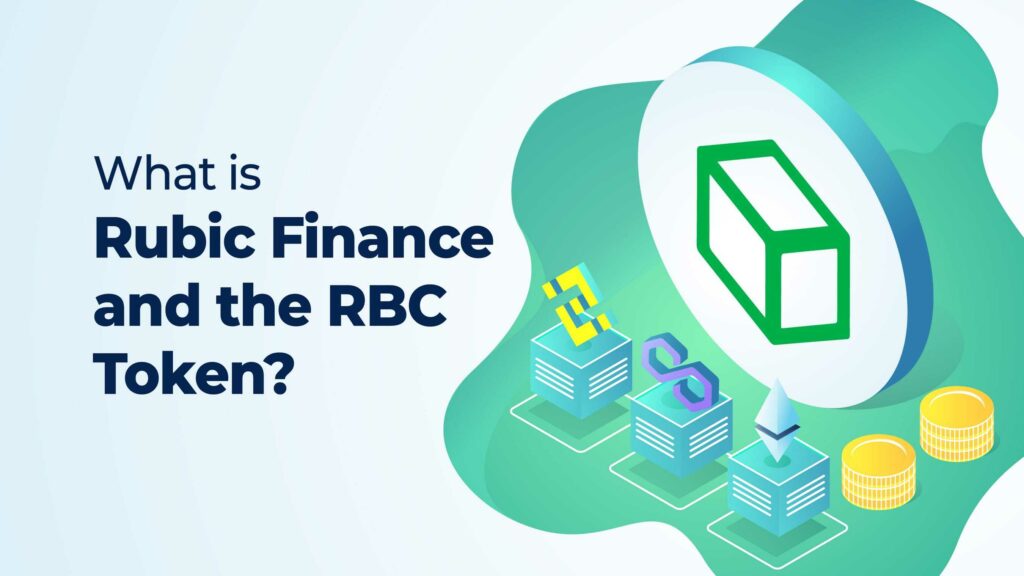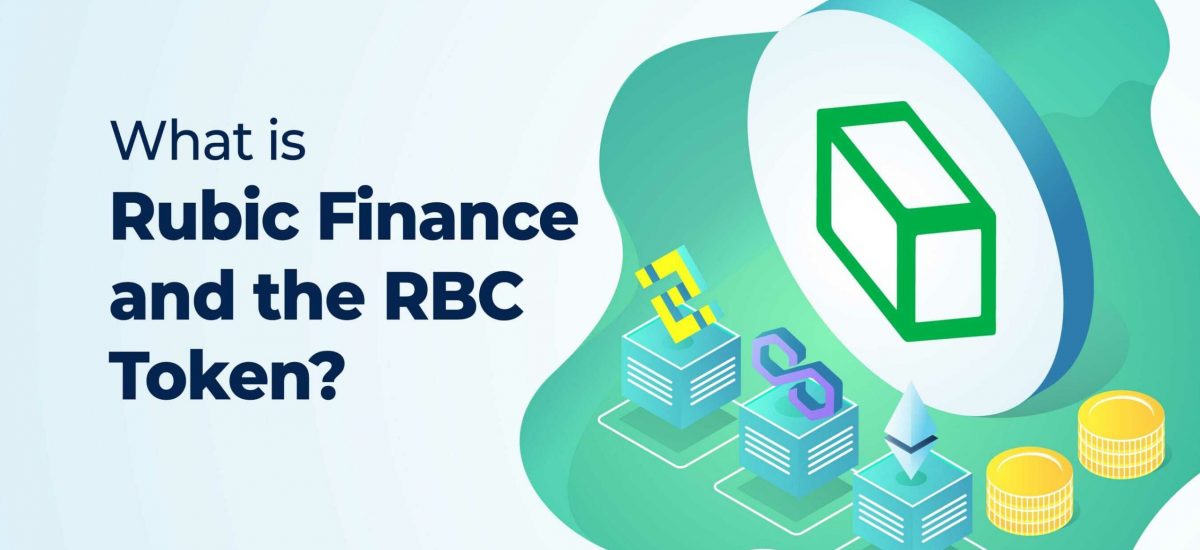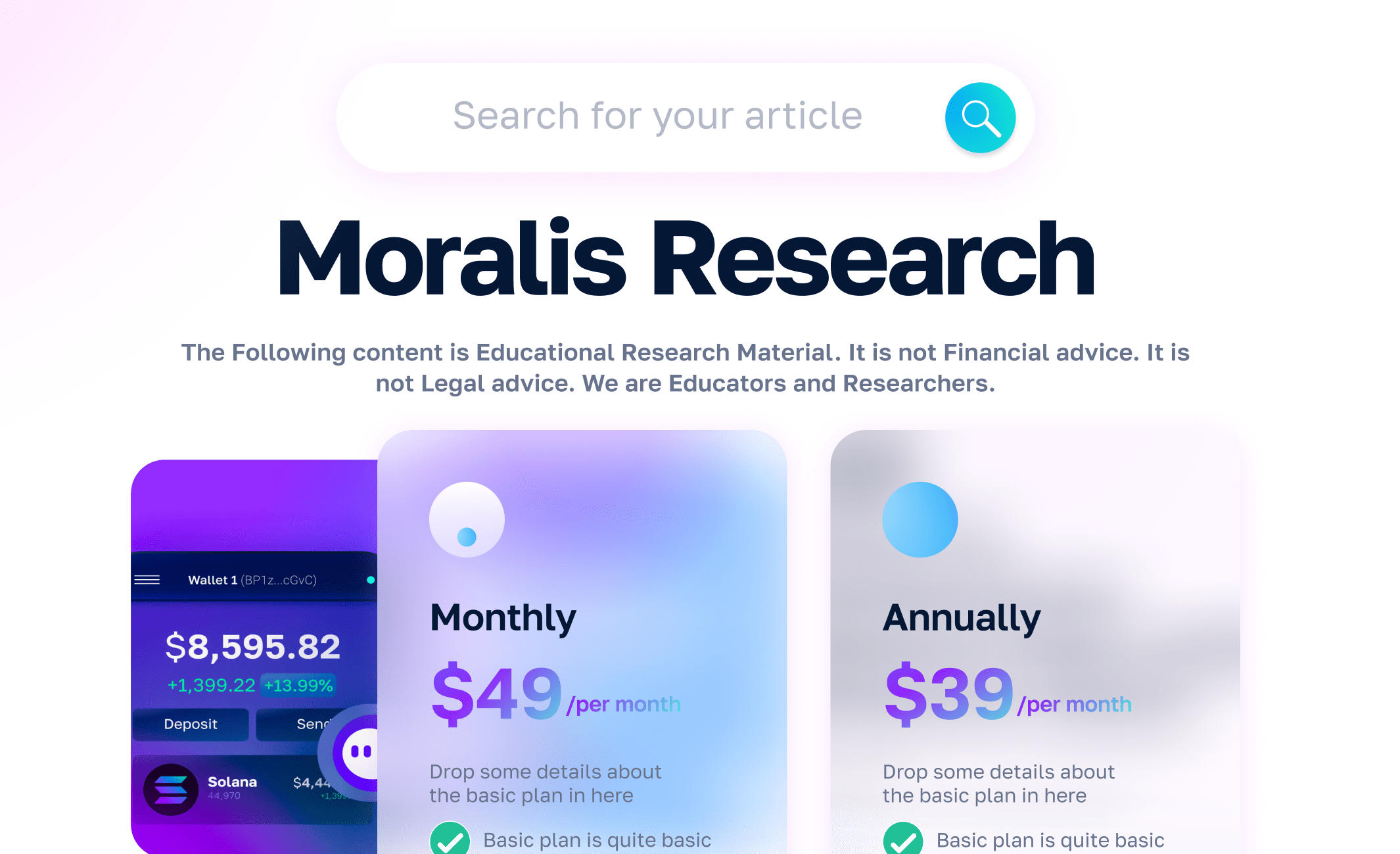
Rubic Finance is a cross-chain decentralized finance (DeFi) protocol that aggregates liquidity for token swaps across multiple decentralized exchanges (DEXs) and blockchain networks to find the best possible rates. The multichain DEX aggregator is powered by the RBC token, which is used for fee payments across the Rubic exchange. Also, the Rubic crypto ecosystem offers a range of features and services catering to a broad user base. This includes limit orders, token creation, broker services, custom routing, and more!
In this article, we’re going to dive deep into the Rubic crypto ecosystem. We’ll explore how the multichain DEX aggregator processes transactions and some of the key features of the platform. Plus, we’ll discuss the role of the RBC token and some of the upcoming features we can expect to see implemented on the Rubic exchange in the near future.
If you’re yet to make your first purchase of cryptocurrency, we recommend checking out our Crypto for Beginners course. Here, we teach students how to safely set up a crypto exchange account to buy, sell, and trade crypto. Plus, we show you how to keep your assets offline in a cold storage hardware wallet.
To interact with decentralized finance (DeFi) protocols like Rubic Finance, you’ll need to understand how to use a Web3 wallet such as MetaMask. The DeFi 101 course at Ivan on Tech Academy teaches you how to install and use MetaMask with popular DeFi protocols, including Uniswap, Compound, Synthetix, and MakerDAO. Also, our DeFi 201 course teaches students all about yield farming, flash loan programming, crypto arbitrage, liquidity pools, and more! Start your DeFi journey the right way, with Ivan on Tech Academy!
What is Rubic Finance?
Rubic Finance is a decentralized finance (DeFi) protocol and the “first multichain DeFi ecosystem” to provide cross-chain support for multiple decentralized exchanges (DEXs) on various top-performing blockchains. The Rubic exchange is a multichain DEX aggregator that offers peer-to-peer trading, instant token swaps, and limit orders. The platform also boasts custom order routing, broker support, zero volume limits, and the ability for users to create their own tokens. Also, the platform enables users to create their own token bridges. Plus, users can deposit funds into the Rubic exchange using the fiat on-ramp.
Furthermore, the Rubic crypto ecosystem supports multiple top DEXs on different networks. This includes Ethereum, Binance Smart Chain (BSC), Polygon, and TRON. Strategic partnerships also include the likes of Uniswap, 1inch Exchange, SushiSwap, PancakeSwap, and QuickSwap.
The platform can be divided into six modules. First, is a smart contract for carrying out token swaps, which varies depending on the blockchain in use. The second, is the interface for transaction management. Third, is the blockchain event scanner which acts as a block explorer for all supported blockchains. The fourth module is the database and backend transaction management system. Then, the fifth module consists of relayers that push transactions to external DEXs like Uniswap or PancakeSwap, which make up the sixth module.
Moreover, as an all-in-one platform for cross-chain DeFi, Rubic Finance provides high levels of interoperability, helping to bridge the various networks in the broader DeFi ecosystem and unite all blockchains into a single easy-to-navigate solution. As such, the Rubic exchange offers a diverse, customizable trading environment with frictionless cross-chain compatibility. The team behind Rubic is responsible for developing several successful crypto projects since 2017. Most notably is MYWISH, a cross-chain smart contract platform developed by the Rubic team.
How Does the Rubic Exchange Work?
The Rubic exchange works in a similar way to the popular DEX aggregator 1inch Exchange. However, with just a few clicks, users can navigate to advanced features, including cross-chain token swaps and token creation.
To execute a trade, begin by selecting “Swaps” on the application. Select your preferred network, then fill out the form to select the tokens you wish to swap, then enter the number of tokens you wish to trade. From here, the multichain DEX aggregator will present the best trading rates by routing orders through various DEXs. Press “Swap” and confirm the transaction in your MetaMask wallet and wait for the transaction confirmation.
Transactions on the Rubic exchange have seven states;
- Draft - swaps are being created and are not yet saved in the database.
- Created - all required parameters have been established by the user. Swaps are stored in the database, but there is no connection to specific user accounts.
- Waiting for Payment / Waiting for Initialization - Transactions are pending payment or awaiting initialization.
- Active - Swaps are initialized and prepared for execution.
- Canceled - The author cancels the transaction. In this state, the only available function is a refund.
- Done - Swaps are successfully executed, and each participant receives the relevant funds.
- Expired - The expiration date of the swap is reached before the terms of the trade are fulfilled. From here, participants receive a refund.
Platform Features
Moralis Money
Stay ahead of the markets with real-time, on-chain data insights. Inform your trades with true market alpha!
Users can select and adjust various parameters when interacting with the platform. For example, users can select a network, customize their trade routing and adjust slippage tolerance. From a single location, users can navigate seamlessly between different assets, networks, and exchanges. Also, the platform creates a bridge for instant cross-chain token swaps and order routing optimization for the best rates available.
Furthermore, users can benefit from integrating the customizable Rubic Relay Widget to facilitate trading across multiple devices directly from a third-party website. Plus, the Rubic makes creating tokens and launching projects efficient and straightforward, thanks to the Rubic platform listing service. Moreover, Rubic provides a comprehensive multichain trading experience, complete with a merch store, fiat on-ramp, and professional trading features.
What is a Multichain DEX Aggregator?
A multichain DEX aggregator funnels liquidity from decentralized exchanges (DEXs) on multiple blockchain networks. Historically, DEXs have only been accessible via one blockchain network. However, the Rubic exchange facilitates instant token swaps across different networks in one single place. Furthermore, the platform draws deep liquidity from some of the most prominent DEXs in the industry. Doing this creates a more stable trading environment with less slippage. In essence, this means that larger orders can be processed, as transactions are routed through numerous exchanges to find the best possible prices.
By uniting blockchains in this way, a multichain DEX aggregator can serve as a one-stop shop for DeFi token swaps. Moreover, users can access the deepest possible liquidity from one convenient location without the need for multiple trading accounts. Interoperability is crucial to the success and mass adoption of blockchain technology and DeFi. For this reason, cross-chain compatibility appears to be an increasingly popular feature among traders and investors. In the future, we could see cross-chain compatibility become a staple feature of decentralized finance (DeFi) protocols if demand continues to increase.
The RBC Token
The Rubic exchange uses the ERC-20 RBC token for fee payments throughout the platform. Fees come from the creation of trades, the broker function, token listings, and crowdsales. The common asset used throughout the Rubic crypto ecosystem is the native RBC token. However, in some circumstances, users can pay for services using ETH, BNB, or TRX.
The RBC token is also essential for paying for marketing services and relayer accounting. Revenue is generated via platform fees. Half of this revenue goes towards operational needs. The other half goes towards liquidity provision.
At the time of writing, the RBC token is trading at around $0.69, with a market cap of $75.9 million, according to CoinGecko. This follows a substantial price rally to the upside throughout much of October 2021.
To learn how to get the most out of your crypto trading experience, check out the Technical Analysis 101 course at Ivan on tech Academy! Here, you’ll learn how to remove your emotions from trades and instead use probabilistic outcomes. Also, we teach students how to read trading charts and understand chart patterns and on-chain indicators. Following this, see our Algorithmic Trading & Technical Analysis course! Here, you’ll learn how to automate trades and backtest strategies using a custom trading bot! Ivan on Tech Academy provides courses covering all areas of the blockchain industry. Enroll today with a 14-day money-back guarantee!
Who Uses Rubic?
The target audiences for the Rubic exchange span a large cross-section of the market. The multichain DEX aggregator offers decentralized token swaps and peer-to-peer trading, making it suitable for most traders and token holders. Also, the platform enables brokers to earn a commission from setting up trades via the Rubic exchange. Furthermore, projects and teams benefit from using the platform. From token creation to airdrop services and liquidity locks, Rubic offers an extensive range of tools for emerging crypto projects looking to break onto the DeFi scene.
The project also serves crypto exchanges and over-the-counter (OTC) companies. Using Rubic’s order book, crypto exchanges and OTC service providers can facilitate secure, decentralized, transparent trades for their clients using the Rubic application programming interface (API) protocol. Plus, exchanges and OTC providers can make a profit in the process. Additionally, investment groups such as hedge funds, family offices, and private investors can benefit from the favorable rates and interoperability the platform provides.
Roadmap
The Rubic crypto ecosystem has seen several upgrades since the first iteration of the platform launched in September 2020. In Q1 2021, Rubic saw the introduction of new blockchain and decentralized exchange (DEX) integrations. During this time, the platform also welcomed mobile support, custom routing, bridge and token support, instant trades on Binance Smart Chain (BSC), and limit orders on Ethereum.
In Q2 of 2021, the platform also integrated cross-chain support for TRON, along with a BNB faucet and an upgrade to the user interface (UI). During this period, the platform also launched APIs for CoinGecko and Coin Market Cap, as well as a fiat on-ramp, merch store, and various wallet and bridge integrations. This includes Moonbeam, Fantom, Avalanche, and renBTC. Also, the MATIC faucet went live during this period.
During Q3 of 2021, the platform sees the addition of the “Anonimizer” tool. This tool will obfuscate both the trading pair, and the value amount of trades carried out on the Rubic exchange. During this period, the platform introduces new cross-chain routing features, bridge and network integrations, and the ability to earn RBC token commissions.
Q4 of 2021 will introduce staking and yield farming functionality, platform governance, and a new mobile app. Plus, we can expect to see further integrations with top-performing blockchains.
What is Rubic Finance? Summary
The Rubic crypto ecosystem appeals to a broad range of users. As a one-stop shop for cross-chain DeFi, Rubic Finance offers more than simply a decentralized exchange DEX. Indeed, Rubic offers seamless interoperability between leading blockchains and DEXs. Plus, the platform boasts various tools and services to make creating and managing assets straightforward.
For blockchain, cryptocurrency, and DeFi to achieve mass adoption, interoperability without friction must be a priority. As such, the Rubic multichain DEX aggregator removes many of the barriers to entry for cross-chain DeFi by streamlining the process of interacting with multiple networks and protocols.
Have you ever thought about building your own decentralized finance (DeFi) applications? Ivan on Tech Academy is the number-one blockchain education suite available online. We provide top-class educational materials across a variety of mediums to suit all types of learning styles. If you’ve never tried coding before, we strongly recommend our Javascript for Blockchain Developers course. Here, you’ll learn the fundamentals of coding, which can then be applied to our advanced courses!
For example, our Ethereum Smart Contract Programming 101 course is a fantastic introduction to building your own decentralized applications (dApps). Following this, be sure to check out our Ethereum Smart Contract Programming 201 course. This advanced Solidity course takes smart contract programming to the next level using Truffle Suite and the latest industry standards. Also, you’ll learn how to integrate oracles into your dApp! Then, put your skills to the test with our Ethereum dApp Programming course! Regardless of your current level of knowledge or experience, Ivan on Tech Academy has the right course for you. Join our community of over 30,000 students and become blockchain certified today! Also, don’t forget to follow us on Twitter @Academy_IOT! We’d love to hear your thoughts about Rubic Finance and the RBC token!



